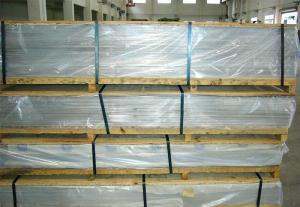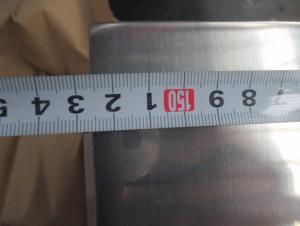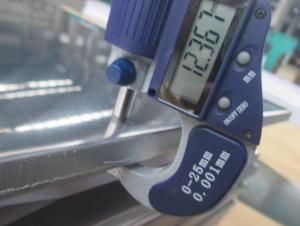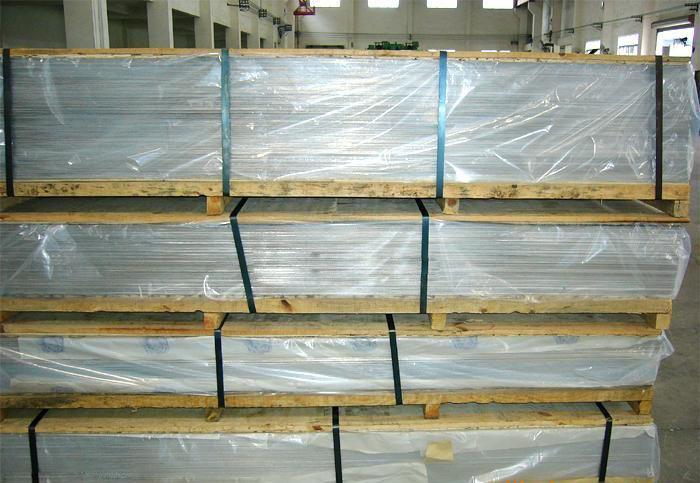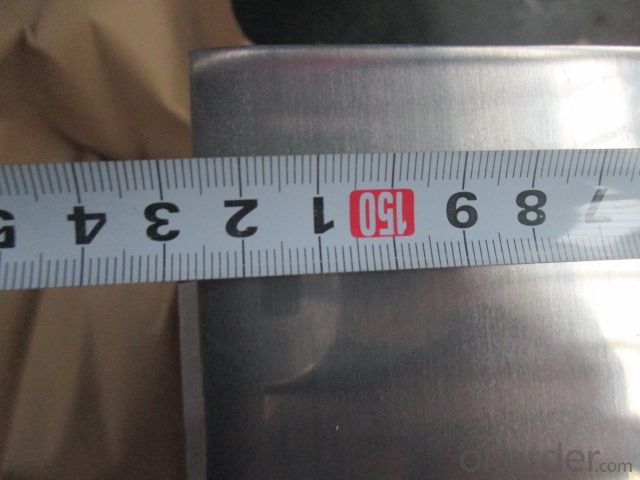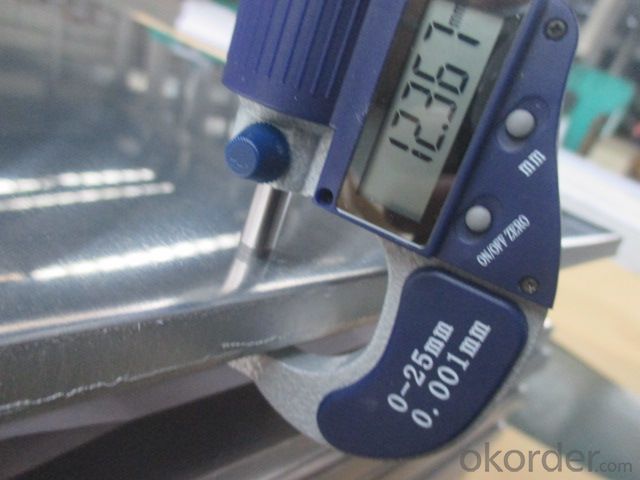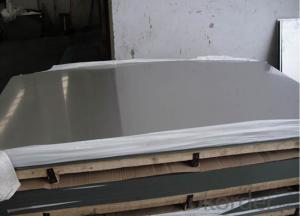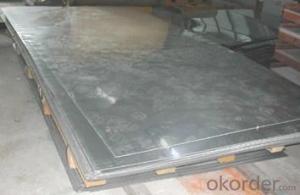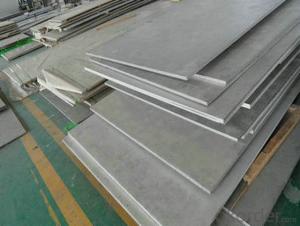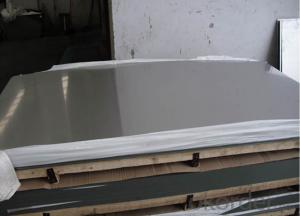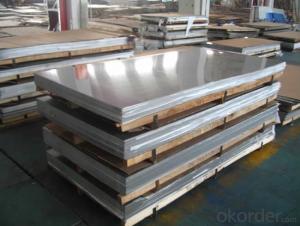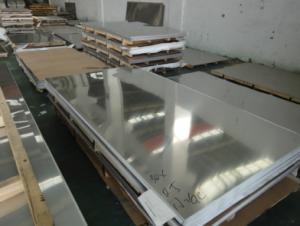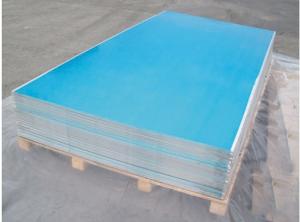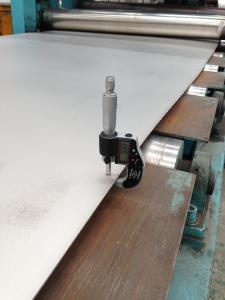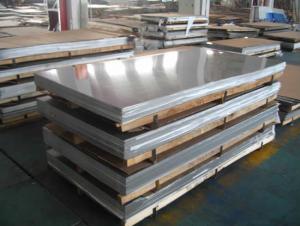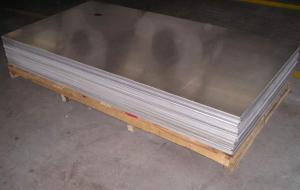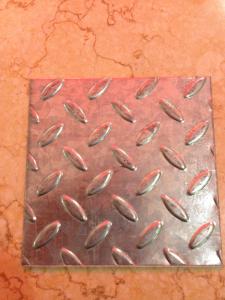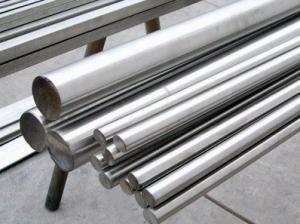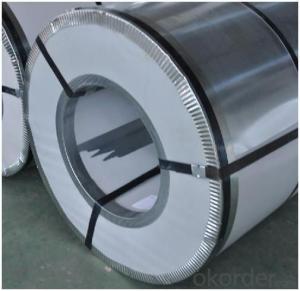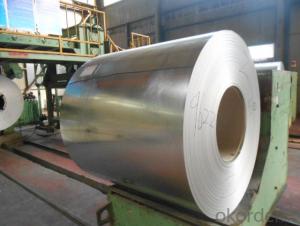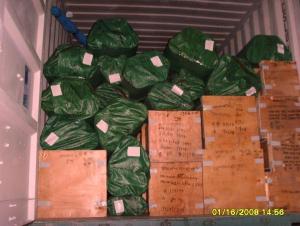Stainless Steel Sheet With Best Price In Warehouse
- Loading Port:
- Shanghai
- Payment Terms:
- TT or LC
- Min Order Qty:
- 3 m.t.
- Supply Capability:
- 2000 m.t./month
OKorder Service Pledge
OKorder Financial Service
You Might Also Like
1、Structure of 304/2B STAINLESS STEEL SHEET.
STAINLESS STEEL SHEET IS ONE POPULAR PRODUCTS IN CHINA MARKET, IT HAVE SEVERAL DIFFERENT APPLICATIONS, SUCH AS, CONSTRUCTION, BUILDING, DECORATION, ETC.
THE GRADE ALSO INCLUDE: 200 SERIES, 300 SERIES, 400 SERIES, ETC.
Mainly applied in the industry of furniture, sports equipment, compressed containers, shipbuilding, railway and the automotive.
2、Main Features of the 304 STAINLES STEEL SHEET.
High intensity
Low welding costs.
Outstanding color compatibility after anodizing
Easy to operate. All-position welding.
Excellent corrosion resistance
Wide applicability.
Length per spool only for reference
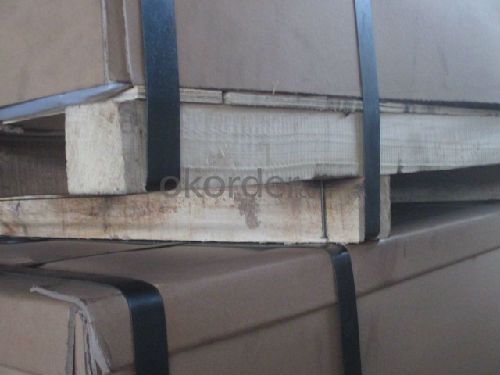
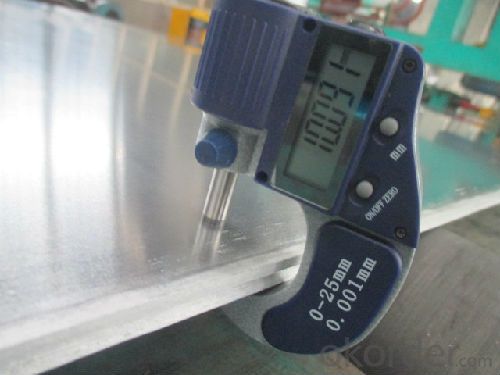
WIDTH*LENGTH: 1219MM*2438MM, 1500MM*3000MM, 1500MM*6000MM,ETC.
THE THICKNESS IS NORMALLY FROM 0.1MM TO 3MM, THEY ARE THE COLD ROLLED SHEET.
5、FAQ of 304/2B STAINLESS STEEL SHEET.
a.What is monthly capacity
---CNBM is one stated own company and our monthly capacity is about 2000tons.
b. Now which countries do you export your goods?
----Now we export to South East Asia,USA, UAE, SRI LANKA, BANGLADESH, Africa, North America,South America ect.
- Q: How do you prevent pitting on stainless steel sheets?
- To prevent pitting on stainless steel sheets, there are several measures you can take: 1. Proper cleaning and maintenance: Regularly clean the stainless steel sheets using mild soap or a non-abrasive cleaning solution. Avoid using harsh chemicals, bleach, or abrasive cleaners as they can damage the protective layer on the surface. After cleaning, thoroughly rinse and dry the sheets to remove any residue that could cause pitting. 2. Avoid contact with corrosive substances: Stainless steel is highly resistant to corrosion, but prolonged exposure to certain chemicals or substances can still cause pitting. Avoid contact with chloride-based cleaners, strong acids, or solutions containing high concentrations of salt. If contact occurs accidentally, immediately rinse the sheets with clean water and dry them thoroughly. 3. Protect against physical damage: Stainless steel sheets can develop pitting if they are scratched or damaged. Take care when handling and installing the sheets to prevent any sharp or abrasive objects from scratching the surface. Use protective films or covers during transportation and storage to minimize the risk of physical damage. 4. Apply a protective coating: Consider applying a protective coating or passivating treatment to the stainless steel sheets. These treatments help to enhance the natural corrosion resistance of stainless steel and reduce the risk of pitting. Consult with a professional or a supplier to find the most suitable coating or treatment for your specific stainless steel grade and application. 5. Regular inspection and maintenance: Periodically inspect the stainless steel sheets for any signs of pitting or corrosion. Promptly address any issues by cleaning, repairing, or replacing the affected areas. Regular maintenance and inspection will help identify potential problems early on and prevent them from worsening. By following these preventive measures, you can minimize the occurrence of pitting on stainless steel sheets and extend their lifespan while maintaining their aesthetic appeal.
- Q: 1cm thick 201 stainless steel plate how much money party
- Water or other weak corrosive medium or stainless steel is called stainless steel; and chemical resistance medium (acid, alkali, salt and other chemical etching) corrosion of steel is called acid resistant steel. Because of the difference in the chemical composition of the two, and make their corrosion resistance is different, ordinary stainless steel is generally not resistant to chemical medium corrosion, and acid resistant steel are generally stainless steel.
- Q: How do you prevent fingerprints on stainless steel sheets?
- To prevent fingerprints on stainless steel sheets, there are several steps you can take: 1. Clean the surface: Before taking any preventive measures, make sure to thoroughly clean the stainless steel sheets using a mild detergent or stainless steel cleaner. This will remove any existing fingerprints or smudges. 2. Use gloves: When handling stainless steel sheets, wear gloves to prevent transferring natural oils from your hands onto the surface. Opt for cotton or nitrile gloves, as they provide a good grip and won't leave behind residue. 3. Avoid touching directly: Try to minimize touching the stainless steel surface as much as possible. This can be achieved by using specialized tools or wearing gloves when handling and installing the sheets. 4. Apply a protective coating: There are various protective coatings available in the market specifically designed for stainless steel. These coatings create a barrier that repels fingerprints and makes cleaning easier. Follow the manufacturer's instructions for proper application. 5. Use microfiber cloth: When you need to clean the stainless steel sheets, use a soft microfiber cloth. Microfiber is gentle on the surface and helps prevent streaks and fingerprints. Avoid using abrasive materials or rough scrubbers that can damage the stainless steel finish. 6. Regular cleaning routine: Establish a regular cleaning routine to remove any fingerprints or smudges that may appear over time. Dilute a mild detergent in warm water and use a soft cloth or sponge to wipe down the stainless steel sheets. Rinse with clean water and dry thoroughly. By following these preventive measures and cleaning techniques, you can significantly reduce the appearance of fingerprints on stainless steel sheets and keep them looking clean and pristine.
- Q: Can stainless steel sheets be used for solar panel frames?
- Solar panel frames can indeed be made from stainless steel sheets. The use of stainless steel is quite popular for solar panel frames because of its exceptional strength, durability, and resistance to corrosion. It can endure various weather conditions, such as extreme heat, humidity, and exposure to sunlight. In addition, stainless steel is both non-magnetic and non-combustible, ensuring the safety of solar panel installations. Moreover, its high strength-to-weight ratio permits lighter frame designs, reducing the overall weight of the solar panels and facilitating their installation. All in all, stainless steel sheets are a dependable and enduring choice for constructing solar panel frames.
- Q: How do you remove fingerprints from brushed stainless steel sheets?
- To remove fingerprints from brushed stainless steel sheets, you can follow these simple steps: 1. Start by gathering the necessary cleaning supplies. You will need a microfiber cloth, mild dish soap, warm water, and a stainless steel cleaner or vinegar. 2. Begin by dampening the microfiber cloth with warm water. Make sure the cloth is not soaking wet, just slightly damp. 3. Gently wipe the stainless steel surface in the direction of the grain. It is important to always follow the grain to avoid causing scratches or streaks. 4. If the fingerprints persist, you can add a small amount of mild dish soap to the damp cloth and continue wiping the surface. Be sure to rinse the cloth thoroughly after applying the soap. 5. If the fingerprints are still visible, you can use a stainless steel cleaner specifically designed for brushed stainless steel surfaces. Apply a small amount of the cleaner onto the microfiber cloth and wipe the surface in the direction of the grain. Remember to follow the manufacturer's instructions for the specific cleaner you are using. 6. Alternatively, you can use white vinegar as a natural cleaning solution. Dampen a cloth with vinegar and gently wipe the surface in the direction of the grain. Vinegar can help remove fingerprints and restore shine. 7. Once you have removed the fingerprints, use a dry microfiber cloth to buff the surface gently. This will help remove any remaining streaks and give the stainless steel a polished finish. Remember to always test any cleaning solution on a small, inconspicuous area of the stainless steel sheet before applying it to the entire surface. Additionally, avoid using abrasive materials or cleaners that contain chlorine or bleach, as they can damage the brushed finish of the stainless steel.
- Q: Are stainless steel sheets suitable for water treatment applications?
- Yes, stainless steel sheets are suitable for water treatment applications. Stainless steel has excellent corrosion resistance properties, making it ideal for use in water treatment processes. It is highly resistant to rust, staining, and chemical corrosion, ensuring the longevity and durability of the sheets. Additionally, stainless steel is easy to clean and maintain, making it hygienic for water treatment applications.
- Q: How do you remove scratches from mirror-finish stainless steel sheets?
- To remove scratches from mirror-finish stainless steel sheets, you can follow these steps: 1. Clean the surface: Start by cleaning the stainless steel sheet with a mild detergent or stainless steel cleaner to remove any dirt, grime, or oils. Ensure the surface is completely dry before proceeding. 2. Assess the depth of the scratch: Determine the severity of the scratch by running your fingernail over it. If the scratch is superficial and can barely be felt, it can be easily repaired. However, deeper scratches may require professional assistance. 3. Remove minor scratches: For minor scratches, you can use a non-abrasive cleaner or toothpaste. Apply a small amount to a soft cloth or sponge and gently rub the scratched area in a circular motion. Rinse the area thoroughly and wipe dry with a clean cloth. 4. Utilize metal polish: If the scratch is still visible after using a non-abrasive cleaner, you can try using a metal polish specifically designed for stainless steel. Apply a small amount of polish to a clean, soft cloth and rub it onto the scratched area in a circular motion. Continue until the scratch fades away, then rinse and dry. 5. Deep scratch repair: If the scratches are deeper or more extensive, you may need to consult a professional stainless steel restoration expert. They can assess the damage and recommend the best course of action, which may involve sanding and polishing the surface to restore its original mirror finish. Remember, it is crucial to test any cleaning or polishing products in an inconspicuous area first to ensure they do not cause any damage or discoloration. Additionally, always follow the manufacturer's instructions when using any cleaning or polishing products.
- Q: Comparison of three properties of aluminium plate, stainless steel plate and cold rolled plate?
- Aluminum sheet material is light, easy to shape, good coloring;
- Q: Are stainless steel sheets fire resistant?
- Stainless steel sheets have excellent fire resistance properties. Due to their high melting point and low thermal conductivity, stainless steel is able to withstand high temperatures for prolonged periods of time without undergoing significant structural changes or losing their strength. This makes stainless steel sheets highly resistant to fire and heat damage. Additionally, stainless steel does not release toxic fumes when exposed to fire, which further enhances its safety in fire-prone environments. As a result, stainless steel sheets are commonly used in applications where fire resistance is a critical requirement, such as in the construction of fire doors, fire escapes, and fire-resistant enclosures.
- Q: Are stainless steel sheets suitable for industrial kitchens?
- Yes, stainless steel sheets are highly suitable for industrial kitchens. Stainless steel is a popular choice for commercial kitchens due to its numerous advantageous properties. Firstly, stainless steel is highly resistant to corrosion and rust, making it ideal for environments with high humidity and exposure to water and chemicals typically found in industrial kitchens. This resistance also ensures that stainless steel sheets are long-lasting and durable, making them a cost-effective choice in the long run. Secondly, stainless steel is easy to clean and maintain, which is crucial in a busy kitchen environment where hygiene is of utmost importance. Its smooth and non-porous surface prevents the accumulation of dirt, grease, and bacteria, making it a hygienic choice and reducing the risk of cross-contamination. Furthermore, stainless steel sheets are heat resistant, making them suitable for use in industrial kitchens where high temperatures are involved, such as near stoves, ovens, or grills. Stainless steel is also resistant to staining and is not affected by acidic or alkaline substances commonly used in cooking and cleaning processes. In addition to its functional properties, stainless steel sheets are aesthetically pleasing and can enhance the overall appearance of an industrial kitchen. They provide a sleek and modern look that can easily fit into various design styles. Overall, stainless steel sheets are a highly suitable choice for industrial kitchens due to their corrosion resistance, durability, ease of cleaning, heat resistance, and hygienic properties. They offer a practical and visually appealing solution that meets the demands of a busy commercial kitchen environment.
Send your message to us
Stainless Steel Sheet With Best Price In Warehouse
- Loading Port:
- Shanghai
- Payment Terms:
- TT or LC
- Min Order Qty:
- 3 m.t.
- Supply Capability:
- 2000 m.t./month
OKorder Service Pledge
OKorder Financial Service
Similar products
Hot products
Hot Searches
Related keywords
